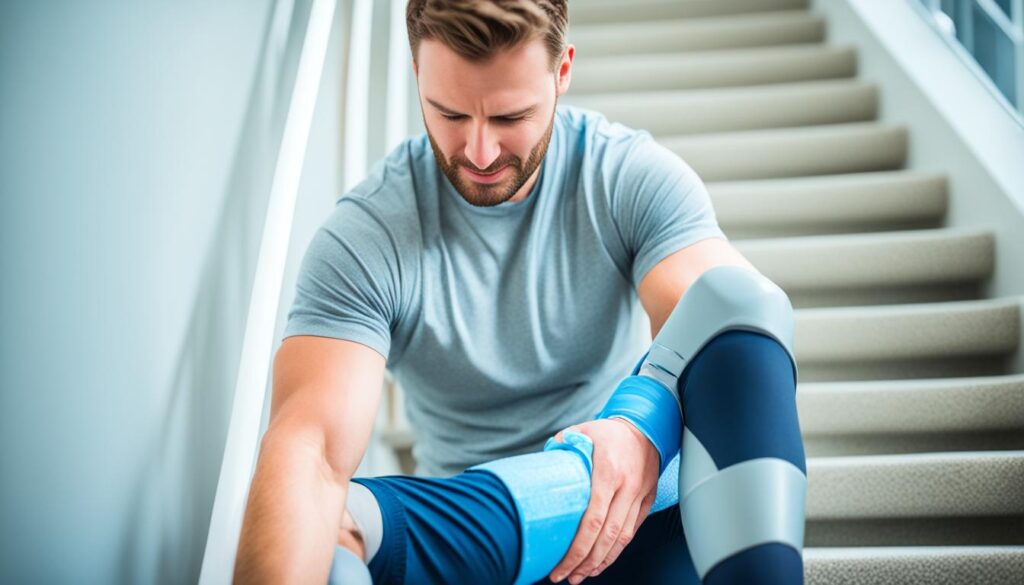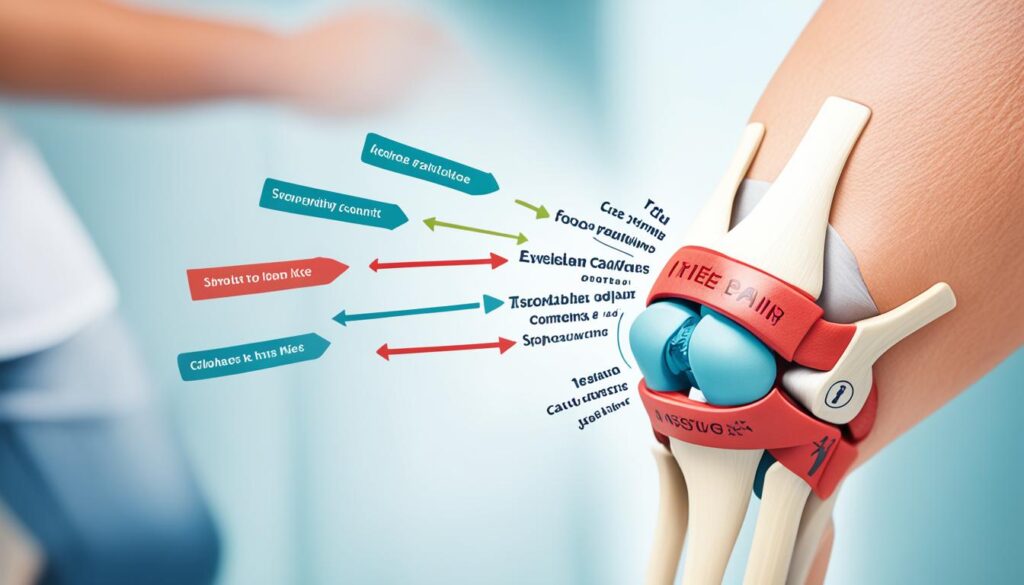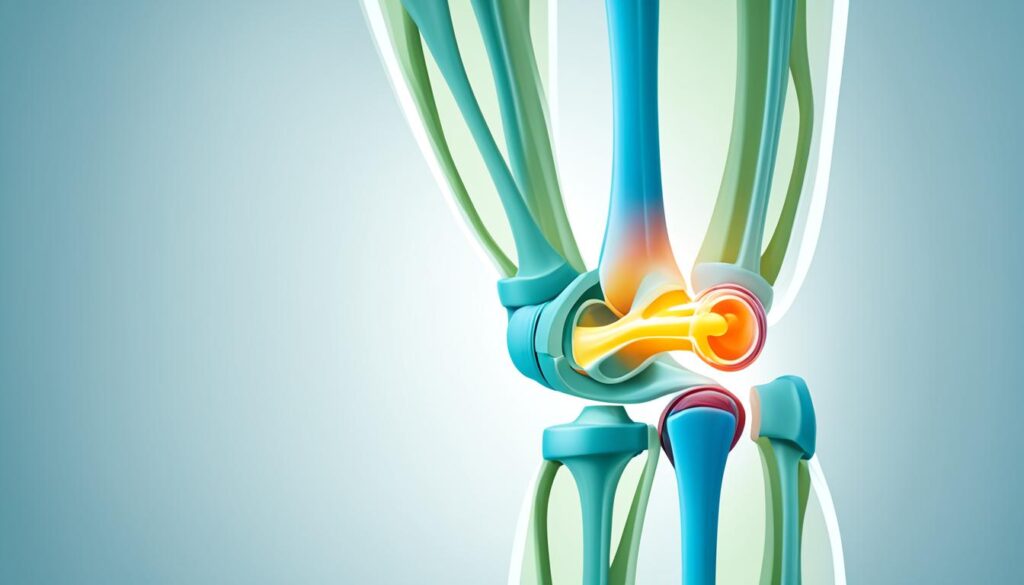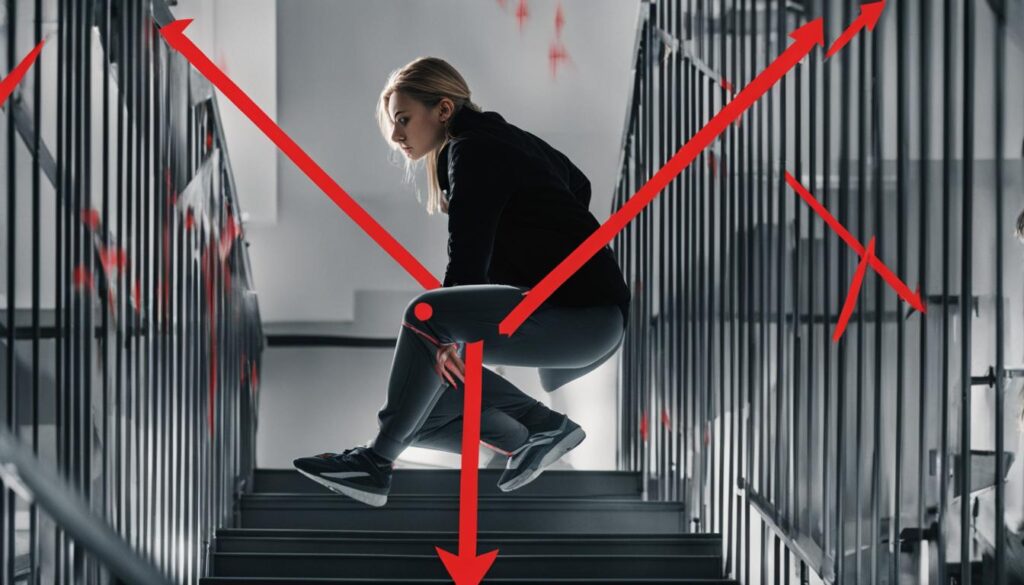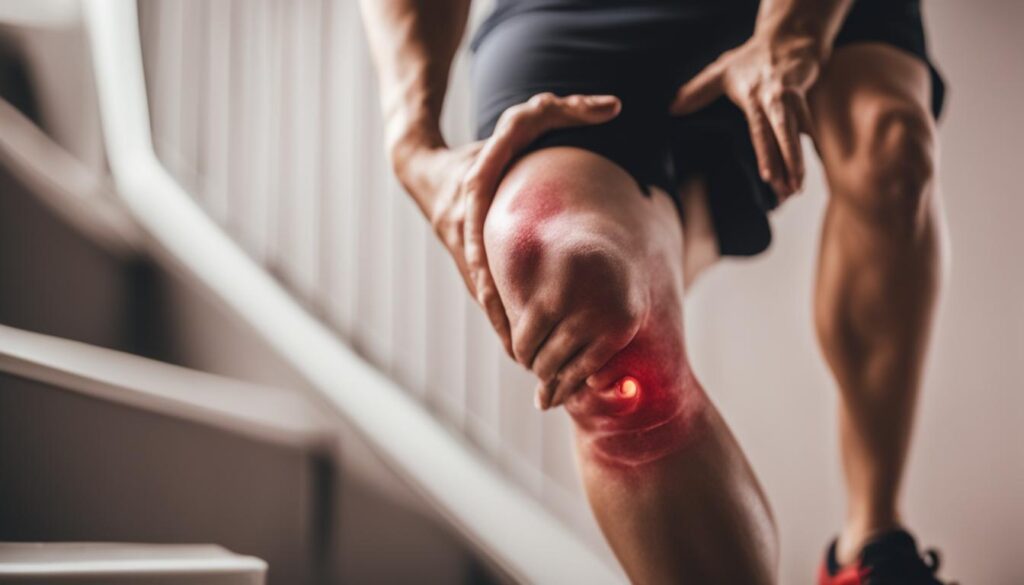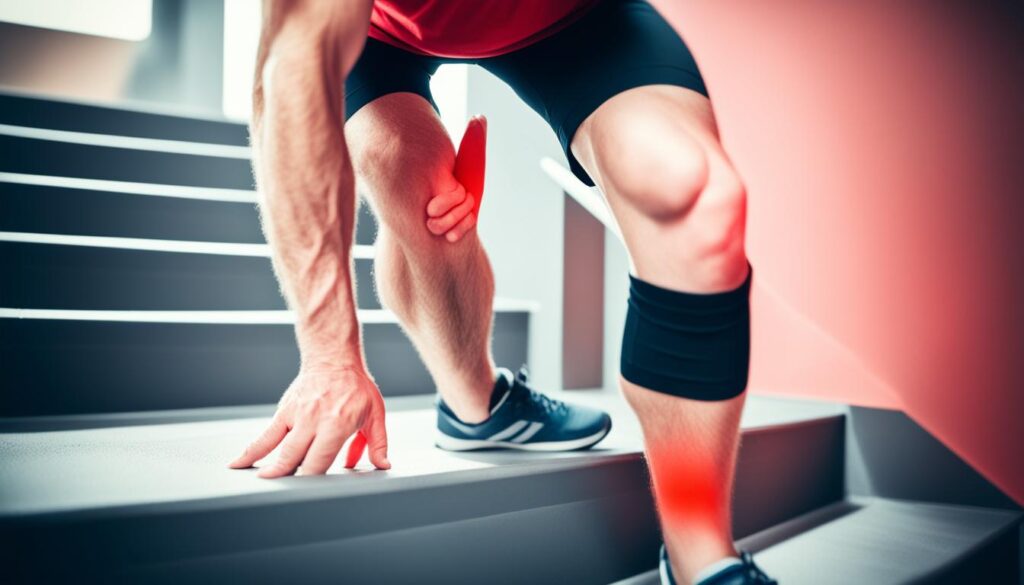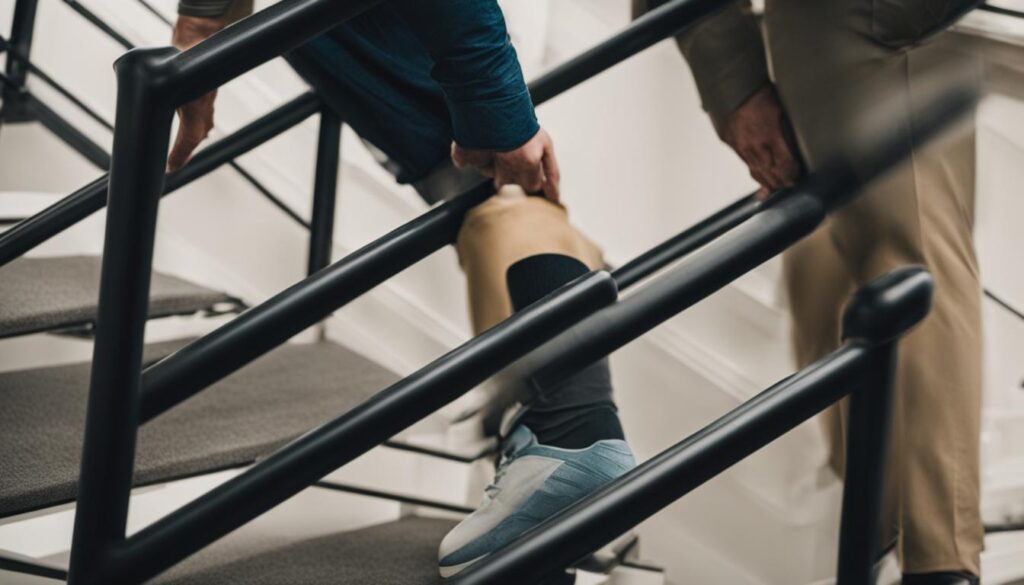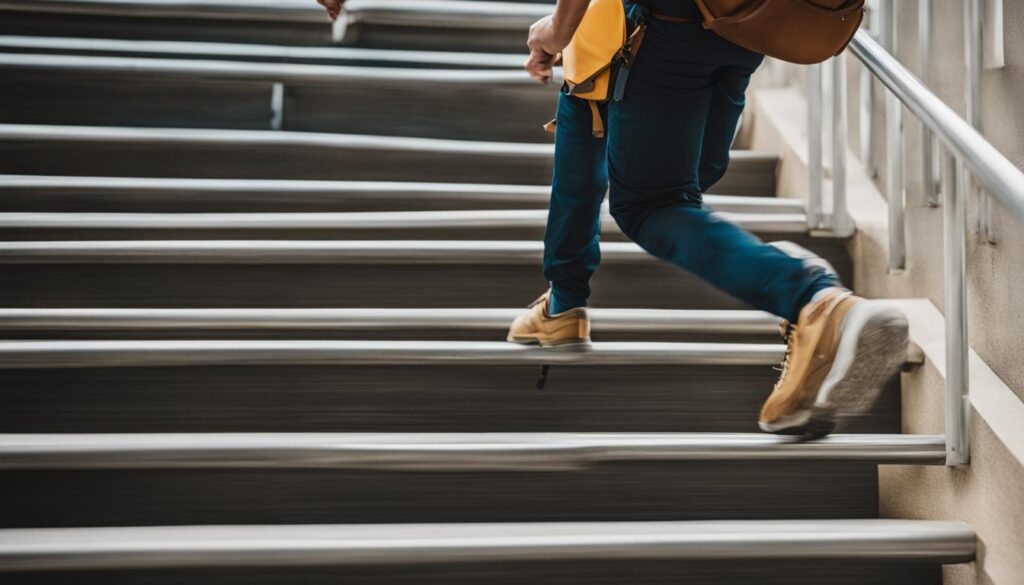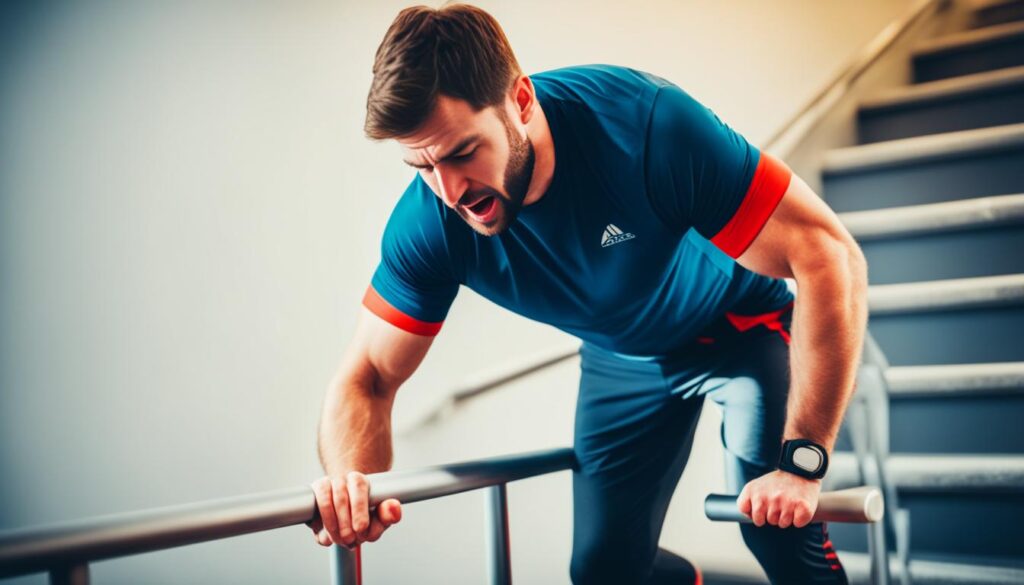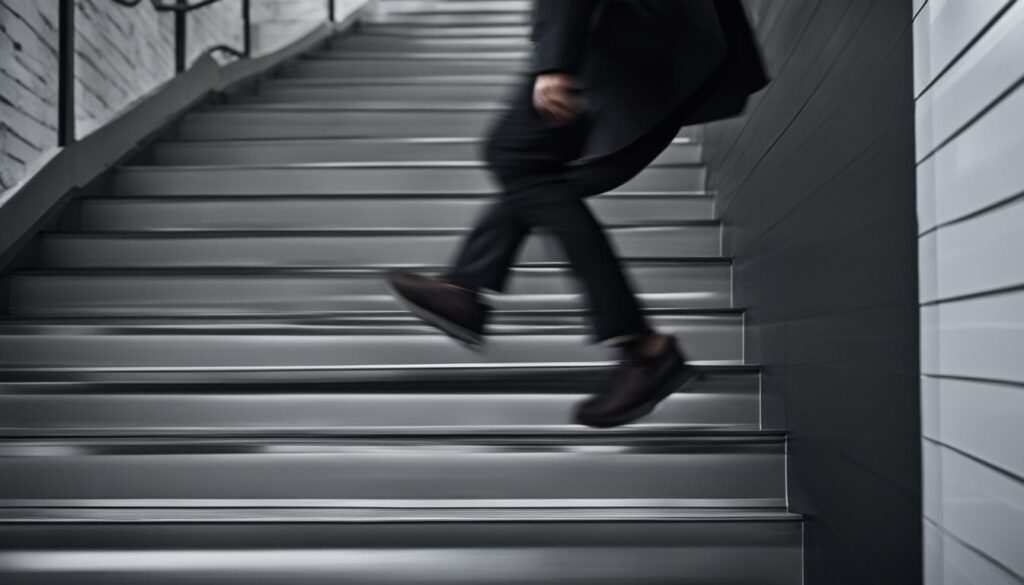Knee pain can be a common issue for climbers, affecting their ability to enjoy the sport. Whether it’s knee pain from climbing stairs, knee pain after climbing, or knee pain from rock climbing or bouldering, understanding the causes of this discomfort is crucial. In this article, we will explore strategies to prevent and treat knee pain associated with climbing, as well as share exercises to strengthen the knee muscles for improved mobility and pain relief.
Key Takeaways:
- Stair climbing is an effective exercise for strengthening the muscles around the knee and managing weight, reducing pressure on the joints.
- Seek guidance from a rehab specialist or trainer to ensure proper form and avoid overexertion when performing exercises to alleviate knee conditions.
- Understanding the biomechanics of the knee and identifying underlying causes of knee pain when climbing stairs can help in prevention and treatment strategies.
- Targeted exercises that strengthen the structures around the knee, such as hip flexor stretches and single-leg lifts, can be beneficial in preventing and managing knee pain from climbing.
- Improving hip stability through exercises like squats can alleviate knee pain and improve overall knee health.
Understanding Knee Pain When Climbing Stairs
Climbing stairs can be particularly problematic for individuals experiencing knee pain. The act of climbing stairs engages different muscles and places additional pressure on the knees. The force exerted on the knees while climbing stairs can be three to six times a person’s body weight.
Common knee conditions that can cause pain when climbing stairs include patellofemoral pain syndrome, meniscus tear, chondromalacia patella, and IT band syndrome.
Understanding the biomechanics of the knee and identifying the underlying causes of knee pain when climbing stairs can help in prevention and treatment strategies.

“When climbing stairs, the force exerted on the knees can be three to six times body weight.”
Prevention and Treatment Strategies for Knee Pain from Climbing
To prevent and manage knee pain from climbing, it is crucial to incorporate targeted exercises that strengthen the structures around the knee. By focusing on the correct muscle groups and promoting proper form, you can minimize the risk of knee injuries and ensure a pain-free climbing experience.
Here are some effective prevention and treatment strategies for knee pain from climbing:
1. Hip Flexor Stretches

Stretching your hip flexors can help alleviate knee pain by reducing muscle imbalances and improving joint stability. Perform exercises such as hip flexor stretches to increase flexibility and strengthen the hip muscles.
2. Single-Leg Lifts
Incorporating single-leg lifts into your training routine can enhance knee stability and improve balance. This exercise targets the muscles surrounding the knee, strengthening them and reducing the risk of knee injuries.
3. Hamstring Stretches
Flexible hamstrings play a crucial role in maintaining knee health. Including hamstring stretches as part of your warm-up routine can help prevent tightness and reduce knee pain from climbing.
Proper body awareness and form are essential in preventing knee pain from climbing. Remember to maintain good posture, engage your core, and avoid excessive strain on the knees.
When climbing stairs, modifying your walking technique and utilizing support, such as holding onto a wall or railing, can provide relief and reduce knee strain. These modifications help distribute the weight more evenly and alleviate stress on the knees.
Another effective strategy to prevent knee pain from climbing is to incorporate resistance bands into your exercise routine. These bands offer resistance and engage the muscles around the knee, strengthening them and reducing the risk of injury. Additionally, ensure you warm up properly before climbing to prepare your body for the physical demands of the activity.
Treating Knee Pain from Climbing
If you are already experiencing knee pain from climbing, it is essential to seek proper treatment. Consulting with a healthcare professional or a physical therapist specializing in sports medicine can provide valuable guidance and tailored treatment plans.
Remember, each individual’s circumstances are unique, and the treatment plan may vary based on the severity and underlying cause of the knee pain.
Incorporating rest and low-impact exercises, such as swimming or cycling, can help reduce inflammation and promote healing. Physical therapy exercises, such as quadriceps and gluteal strengthening exercises, may also be recommended to improve knee stability and function.
The Role of Hip Stability in Knee Health
The health of the hip plays a significant role in knee health. The knee joint is a manifestation of what is happening in the hip. Lack of hip mobility or stability can lead to compensatory movements and increased strain on the knee, resulting in knee pain.
Assessing and improving hip stability is crucial in maintaining knee health. One-legged squats can be used as an assessment tool for hip stability. By performing one-legged squats, we can evaluate any imbalances or weaknesses in the hip muscles that may contribute to knee pain. This exercise requires stability and control to perform correctly, so it helps identify areas that need improvement.
To improve hip stability, exercises such as squats can be beneficial. Squats target the muscles surrounding the hip joint, including the glutes, hamstrings, and quadriceps. Strong hip muscles provide better support and stability to the knee, reducing the risk of pain and injury.
Strengthening the hip muscles through exercises like squats can help alleviate knee pain and improve overall knee health. Proper form and technique are essential to maximize the benefits of these exercises while minimizing the risk of injury. It is important to start with lighter weights or bodyweight movements and gradually increase the intensity as strength and stability improve.
To ensure optimal hip and knee health, it is recommended to consult with a healthcare professional or a qualified trainer who can provide guidance on proper exercise techniques and create a personalized plan based on individual needs and goals.
Strengthening Exercises for Knee Health
Engaging in targeted exercises that strengthen the muscles around the knee can greatly improve knee health and reduce knee pain. By incorporating these exercises into regular exercise routines, individuals can build strength and stability in the knees, enhancing their overall climbing performance.
Prone Hamstring Curls with Resistance Band
One effective exercise to strengthen the hamstrings and glutes is the prone hamstring curl with a resistance band. This exercise specifically targets the muscles at the back of the thighs and can help improve knee stability. Here’s how to perform the exercise:
- Start by lying face-down on a mat or comfortable surface.
- Loop a resistance band around your ankles and anchor the other end under a sturdy object.
- Engage your core and slowly bend your knees, curling your legs towards your glutes while keeping your hips on the ground.
- Hold the contracted position for a second, then lower your legs back to the starting position in a controlled manner.
- Repeat for the desired number of repetitions.
Side Steps with Resistance Band
To target the knees specifically, incorporating side steps with a resistance band into your routine can be highly beneficial. This exercise helps strengthen the muscles around the knees and promotes stability. Follow these steps to perform side steps:
- Place a resistance band around your legs, just above the ankles.
- Assume a squat position with your feet shoulder-width apart.
- Keeping tension on the resistance band, take sideways steps to the right, maintaining a slight squat throughout the movement.
- Repeat the same movement to the left, taking side steps in a controlled manner.
- Continue alternating sides for the desired number of repetitions.
By regularly incorporating these strengthening exercises into your training regimen, you can enhance knee health, reduce knee pain, and improve your overall climbing performance. Remember to prioritize proper form, listen to your body, and gradually increase the intensity of the exercises to avoid overexertion and injury.
Conclusion
Knee pain from climbing can be a significant hindrance to our enjoyment of the sport. However, understanding the causes of knee pain and taking proactive measures can help us find relief and improve our knee health. By implementing prevention and treatment strategies and engaging in targeted exercises to strengthen the knees, we can overcome knee pain and continue enjoying climbing and other physical activities pain-free.
It is crucial to listen to our bodies and pay attention to any signs of knee discomfort. Seeking guidance from healthcare professionals, such as rehab specialists or trainers, can provide valuable insights and individualized recommendations to address knee pain effectively. Additionally, taking steps to prevent knee problems, such as using proper form, incorporating warm-up exercises, and being mindful of body mechanics, can go a long way in maintaining knee health.
Remember that prevention is better than cure, and investing time and effort in strengthening our knees can make a significant difference. Incorporating exercises that target the structures around the knee, such as hip flexor stretches, single-leg lifts, and hamstring stretches, can enhance knee stability and prevent future pain. By adopting these proactive approaches, we can ensure that knee pain does not impede our climbing adventures and allow us to enjoy the sport for years to come.
FAQ
What causes knee pain when climbing?
Knee pain when climbing can be caused by various conditions such as patellofemoral pain syndrome, meniscus tear, chondromalacia patella, and IT band syndrome. The biomechanics of the knee and the pressure exerted on the knees while climbing stairs can exacerbate these conditions.
How can I prevent knee pain when climbing?
To prevent knee pain when climbing, it is important to engage in targeted exercises that strengthen the muscles around the knee. Incorporating hip flexor stretches, single-leg lifts, and hamstring stretches can be beneficial. Modifying walking techniques, using support like a wall or railing while climbing stairs, and incorporating resistance bands into exercise routines can also help prevent knee injuries.
What exercises can help improve knee health?
There are several exercises that can improve knee health. Prone hamstring curls with a resistance band can strengthen the hamstrings and glutes, while side steps in a squat position with a resistance band can target the knees specifically. These exercises can be incorporated into regular exercise routines to build strength and stability in the knees.
How can hip stability impact knee health?
The hip plays a significant role in knee health. Lack of hip mobility or stability can lead to compensatory movements and increased strain on the knee joints, resulting in knee pain. Assessing and improving hip stability, such as through exercises like squats, is crucial in maintaining knee health.
What should I do if I experience knee pain from climbing?
If you experience knee pain from climbing, it is important to listen to your body and seek guidance from healthcare professionals. Treatment strategies may include rest, targeted exercises, and proper form. Taking steps to prevent knee problems, such as warming up before climbing and using proper techniques, can also help alleviate knee pain.



